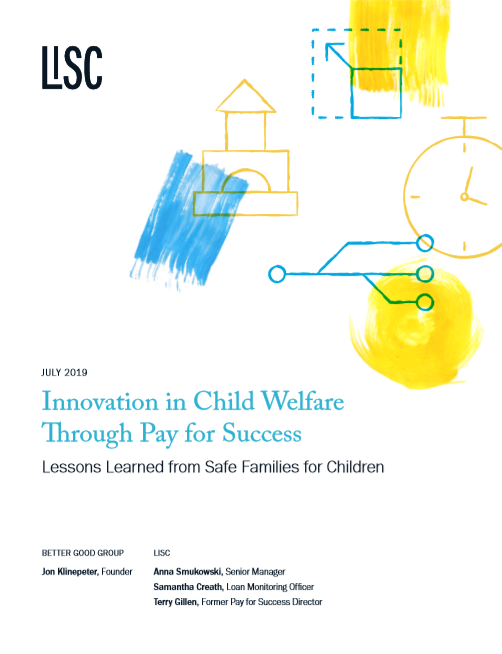Innovation in Child Welfare through Pay for Success
A new LISC report summarizes barriers and opportunities for states and localities to innovate the child welfare system through Pay for Success. The report is based on the experience of LISC and Safe Families for Children engaging in child welfare PFS transaction structuring in eight states as well as telephonic interviews conducted with key project partners.
The United States foster care system is in crisis. With an estimated 438,000 youth residing in foster care at any one time, and over 270,000 children entering every year,1 the number of incoming children outpaces the number exiting. The current system is fragmented, lacking in resources, and facing additional strain due to the opioid epidemic.2 In an attempt to innovate how government and nonprofit organizations think about providing services, Pay for Success (PFS) has emerged as a potential solution to scale programs with the most promising outcomes. Safe Families for Children (Safe Families), is expanding its evidence base through a randomized controlled trial (RCT) demonstrating that its intervention prevents at-risk children entering the child welfare system. Despite positive interim results, Safe Families, like other promising programs, has encountered significant barriers in scaling its model using PFS.
This report is based on the experience of LISC and Safe Families engaging in child welfare PFS transaction structuring in eight states, including telephonic interviews conducted in fall 2018 with the key partners involved in the project to date. This report presents barriers faced by stakeholders4 engaged in Safe Families PFS transaction structuring, and how these challenges are exacerbated by the sensitivities of working in child welfare. We then provide an overview of potential opportunities to engage child welfare in outcomes-based contracting and PFS projects in the future.
Since the completion of the white paper, several updates of note have occurred. To learn more, click here.
